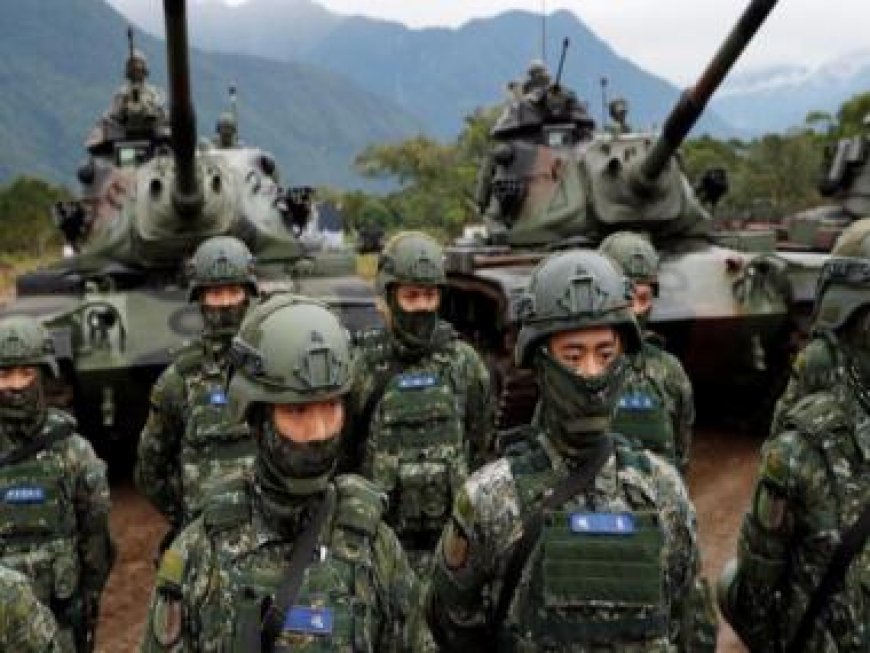US mulls building artificial reefs, "unlimited" weapons supply to help Taiwan fight China
US mulls building artificial reefs, "unlimited" weapons supply to help Taiwan fight China

A US military expert has suggested building artificial reefs to thwart a Chinese amphibious landing on Taiwanese beaches and complicate its naval surface and underwater operations near its shores.
The low-cost, long-lasting buildings have also been shown to offer other economic and ecological advantages, including the promotion of tourism and the attraction and preservation of marine life.
The idea depicts a terrible scenario in which Chinese ships capsize in the midst of fierce naval combat, requiring the release of Chinese resources. As a result, its actions are slowed considerably, giving the Taiwanese defenders multiple opportunities to annoy the attackers.
Meanwhile, US Defense Secretary Lloyd Austin said that Washington will provide “significant” military aid to Taiwan aimed at deterring China.
Austin said he was pleased that “the United States will soon provide significant additional security assistance to Taiwan through (the) presidential drawdown authority (PDA) that Congress authorized last year.”
Washington could use the PDA to arm Taiwan just like it has been arming Ukraine.
According to Scott Savitz, a senior engineer at the RAND Corporation, artificial reefs would impede China’s primary tool to “rapidly move vast quantities of personnel and equipment across a 100 mile Strait and onto the island” with “seaborne” forces. Aerial transport cannot lift military hardware and infrastructure’s incredibly heavy mass and volume.
Taiwan has only a few potential landing sites, like beaches and the required water depth to support an amphibious assault and landing craft. Thus non-explosive physical barriers can be as effective as naval mines, explosive aerial and maritime drones, and gun and rocket artillery in stalling an incoming naval armada.
The USS Guardian had to be decommissioned in 2013 after it became stranded on a coral in the Philippines. Then, in 2015, a US Military Sealift Command warship became caught on a reef close to Okinawa for more than a week.
Large cargo ships have hit reefs twice in the past year, first in Jordanian seas in September 2022 and once east of Belize in March 2023.
Furthermore, if China tries to blast the reefs, pieces of the structure may fall off and present risks in other areas. Not to mention using extra ammo and resources that could be put to better use elsewhere, particularly in the early stages of a fight.
Artificial reefs will make it extremely difficult and time-consuming for Chinese amphibious or naval operations to get close to Taiwanese coastlines. However, the proposal only solves a portion of Taiwan’s military defensive problems because an amphibious landing would not be China’s only option.
During a Taiwan operation, it would be carried out in simultaneously to weaken the Republic of China Navy (RoCN) and RoC Air Force by using aerial, land-based, and naval missilery and attacking ground-based targets such ammunition dumps, command and control centres, and air defence radars.
Given their enormous advantage in numbers, technology, logistics, and training, it wouldn’t be an exaggeration to claim that the PLA would accomplish these responsibilities basically without any difficulty.
Along with land-based fighter-bombers like the J-11, J-16, J-10, J-20, Su-30 MKK, Su-35, and H-6K missile-carrying strategic bombers and jets like the J-15 from aircraft carriers like the Liaoning and Shandong, Taiwan would be surrounded by hundreds of ships, both civilian maritime and naval warships.
Reconnaissance-strike and ISR drones like the TB-001, BZK-005, and CH-7 will support them by continuously providing targeting information on Taiwanese ground and naval targets. If no political agreement is achieved and the battle continues, the island will eventually lose its military equipment since it lacks any strategic depth to retire into.
Therefore, an amphibious landing is only one part of a Chinese attack on Taiwan, and even if it is stopped, the loss of the rest of the Chinese troops will be enough to give the island’s government and populace a fait accompli.
Furthermore, the reefs would only protect Unmanned Underwater Vessels (UUV) nest beaches and bigger amphibious landing boats, not small squads of marine special operation frogmen from reaching the island from one of Taiwan’s many rocky shores.
These special forces are capable of carrying out a variety of tasks, such as taking down important command centres and air defence radars or covertly giving Chinese bombers and cruisers precise targeting information.
In other words, it wouldn’t make sense for Taiwan’s military defence to be successful in only one area (preventing a Chinese amphibious landing) while the rest of its military system fails.
Taiwan will need to completely dismantle its air and naval forces in order to save its ground forces for the arrival of American or Japanese military help if it wants to resist and defeat any Chinese military incursion.
Instead, later arrival of external military assistance would speed the Taiwanese military’s eventual overthrow. Having warships and aircraft carriers in the Taiwan Strait alongside the RoC military is the only way to have a realistic chance of repelling a Chinese invasion.
However, maintaining a permanent presence in the Straits carries its own set of political concerns because doing so could incite the Chinese to attack because they might regard it as a direct threat to their desire for reunification.
Read all the Latest News, Trending News, Cricket News, Bollywood News,
India News and Entertainment News here. Follow us on Facebook, Twitter and Instagram.
What's Your Reaction?



























































